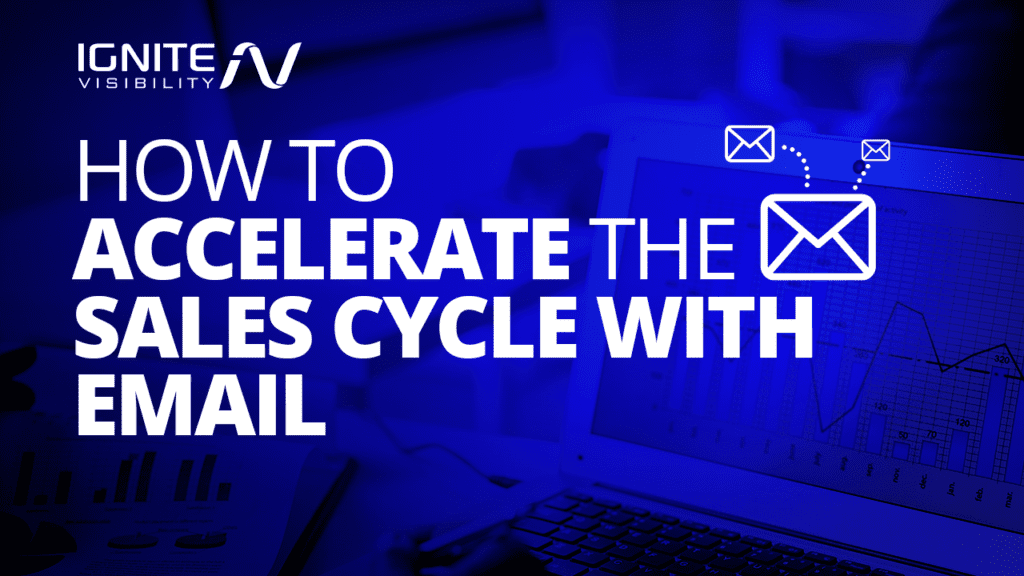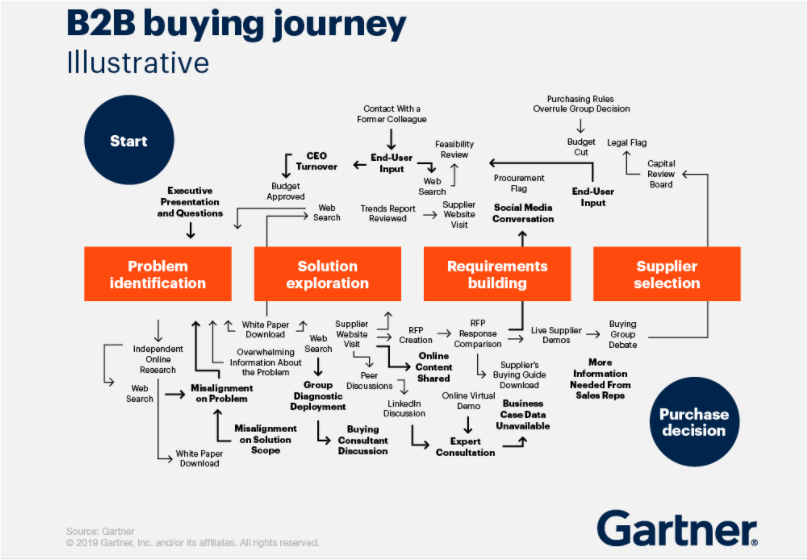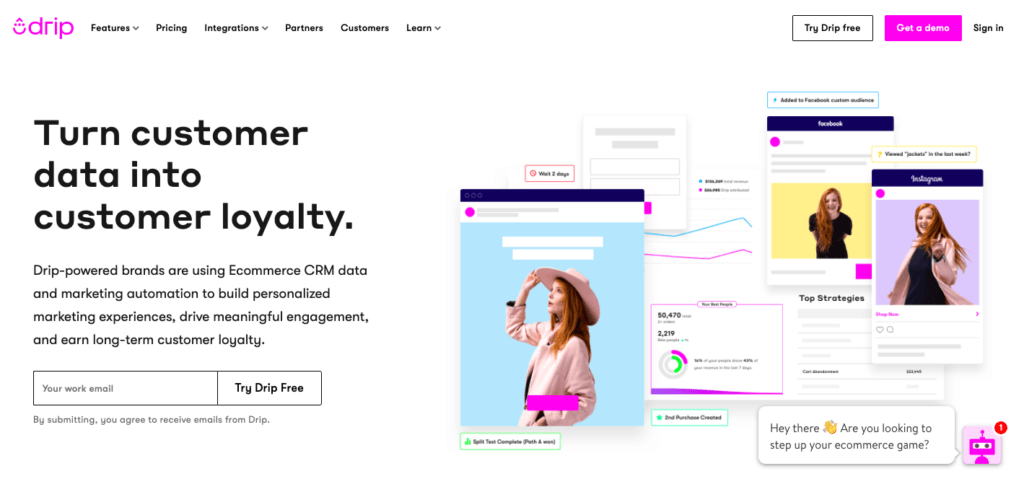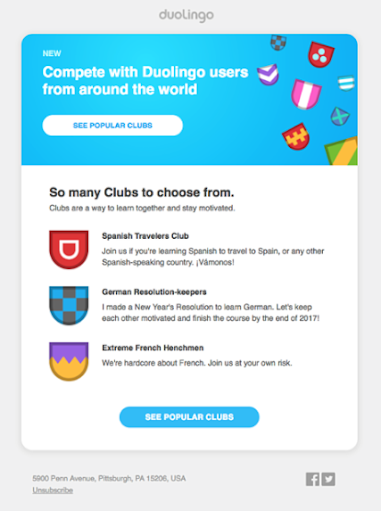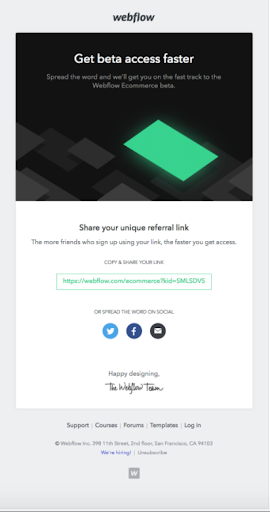As far as customer communication methods go, it’s hard to find anything that compares to email marketing.
For brands with long, messy sales cycles, developing a well-planned email strategy can help you nurture, convert, and retain customers for the long haul.
Learn how to use email to accelerate your sales cycle by driving users through the sales funnel faster.
What is a Sales Cycle?
A sales cycle is a series of predictable stages required to sell a product or a service.
While there’s some variation between definitions, most experts agree that the sales cycle starts when a prospect makes contact with the first touchpoint and ends when the deal closes.
The sales cycle includes the marketing efforts used to drive brand awareness, generate leads, and engage audiences, as well as the calls, emails, and other activities involved with the selling process.
In this article, I’m going to focus on email marketing strategies for complex sales cycles.
I’ll first share some tips for building a foundation for your email strategy, then dive into some examples that you might use at different stages in the sales process.
Know Your Audience
As with just about any digital marketing strategy, the process begins by collecting some audience intel.
Before you start trying to generate leads and way before you craft your first email, you’ll need to understand exactly who you’re talking to, their pain points, goals, and motivations.
If you’re unfamiliar with buyer persona research, I’ve put together an entire guide that outlines the process for a few different types of customers (read the full piece here).
In any case, your goal is to find out the following information about your target customer:
- Who is this person?
- What demographic groups do they belong to?
- What industry are they in?
- What is their role?
- What problem are they trying to solve?
- How (and where) do they research this product/service?
- What compels them to make a purchase?
- Is anyone else involved in the decision-making process? If so, who else do you need to appeal to?
The answer to the above questions will allow you to know how to approach your target market. It will help the sales team to customize their message and target prospective customers in a focused manner.
Define Your Sales Cycle
Companies in the B2B space that offer professional services, software solutions, financial products, IT services, or insurance all fit within the “complex sales cycle” category.
On the B2C side, real estate and automotive companies are the most obvious examples here.
Though companies that say, build pools, provide remodeling services, or sell high-consideration products like pro-grade cameras, engagement rings, or high-end stationary bikes like Peloton also fit the bill.
Essentially, anything that requires a significant investment or involves a contract typically involves a long, potentially complex sales cycle.
Focus on Generating Qualified Leads
According to Marketo, a whopping 96% of website visitors are unlikely to convert.
Casting a wide net only makes it more difficult to identify qualified leads and creates more work.
Focusing on buyers who are likely to convert will result in an increased return on marketing effort. It will allow the sales team to focus on qualified leads and convert them into customers.
So, it’s important that you carefully analyze your list and disqualify the leads that are unlikely to convert. Instead, you’ll want to focus your efforts on nurturing prospects who have expressed interest in your brand and what you have to offer.
For more information on using your website to grow your email list, I recommend checking out my recent post on the topic.
Align Your Sales Pipeline with the Customer Journey
This step is almost like a mirror of the “define your sales cycle” step mentioned above. In this case, you’ll want to make sure that the activities and messaging that happens on your end actually matches your customer’s journey.
Consider what steps customers take before making a purchasing decision. Hint: here, your aim is to uncover customer intent to gain an understanding of how their needs evolve as they make their way through the sales cycle.
Understanding sales objections can give you more context and help tailor your pitch to the prospect’s needs. So, find out what might hold them back from committing to a purchase and address those objections head-on to remove friction hiding out in your process.
Ultimately, nailing the journey-sales cycle alignment will set you up to deliver the right email at the right time–which, done right, should help you close faster.
Optimize the Sales Process
The stats are pretty grim here. Many sellers waste a ton of time on activities that don’t generate leads or revenue. That includes administrative tasks, searching for content, and standard workplace web surfing and socializing.
Consider what you can do to streamline your process so that you can spend more time on valuable activities like prospecting and crafting the right message.
Where can you apply automation or eliminate redundancies? How might you better organize the content, templates, and information you need to engage with customers?
How to Speed Up the Sales Cycle with Email
In a study published in the Harvard Business Review, researchers found that the buying process is no longer linear.
Which means, prospects can enter the sales cycle from a whole host of entry points, which may correspond with different stages in the sales cycle.
In some cases, prospects might move back and forth between stages, enter later in the game, or stay put indefinitely (though hopefully, you can get them moving again).
Whether you’ll be emailing prospects one-at-a-time or creating segmented campaigns depends on your business model, what you offer, and the complexity of your sales cycle.
Keep in mind, if you’re emailing multiple people at a time, you’ll get the best results by setting up sequences in advance.
Here are some drip campaign tips and examples from real brands in case you need some guidance.
For one-off emails, it’s still worth it to create a template for a variety of situations that you can reuse and customize as needed. In both cases, you’ll want to make sure you span the entire sales cycle.
Below, I’ve included a handful of email types that speak to different stages in the sales cycle.
Cold Outreach
Cold outreach can be tricky. It’s easy to start off on the wrong foot, and if you’re not careful, your leads may assume you’re spamming them.
If you’re reaching out cold, your best bet is to send a “regular” email, as using email marketing automation tools for this type of outreach violates the CAN-SPAM act as well as the more recent GDPR and CCPA rules that require brands to obtain explicit consent from consumers before marketing to them.
At this stage, you’ll want to take your time researching your prospects before you either reach out personally or create a lead generation campaign designed to get your targets on your email list.
Here’s an example from Autoklose that can be customized with key details in a matter of minutes and does a nice job getting straight to the point:
Here’s another example from Hubspot which incorporates a handful of specific details that signal to the recipient that this email was written just for them:
Lead Nurturing Sequence
Another way to make an introduction is by creating a nurture email series.
In this case, you’re targeting someone who has already demonstrated interest in your brand by say, downloading an e-book, or signing up for a free trial.
Here, the first step is to set up an autoresponder that ensures that the recipient gets an email upon signup delivering the requested content.
Here’s an example from UI Sounds that’s simple yet effective (while the screenshot doesn’t show it, the image is actually a GIF that provides a little extra interest).
After the initial “welcome” email, it’s all about relationship-building.
This type of campaign aims to guide prospects toward the close with relevant, educational content that ensures your stay top of mind, even as buyers are actively researching other brands.
It’s not the right place for a “hard sell” and you’ll want to avoid sending too many emails. According to a Databox survey, 45% of respondents said that one email a week is the ideal cadence.
Here’s an example from ShareDesk that speaks to recipients just entering the evaluation/consideration stage in the sales cycle.
Here, you’ll find visually appealing photos of the co-working space along with links to top-of-the-funnel content:

ShareDesk coworking space landing page that speaks to recipients in the consideration sales cycle stage Source
Later, when prospects finally reach that crucial decision stage, they’ll evaluate their vendor relationships alongside the features, benefits, and pricing plans to determine the best solution for their needs.
Re-engaging with Prospects
It’s hard to earn leads, but it’s also hard to keep them around, particularly if they lose momentum and disengage with the sales process.
That’s where re-engagement emails are especially useful. While you might associate “re-engagement” with abandoned cart emails, that’s just one of many trigger events you might use to kick off a re-engagement sequence.
This email from Glitch introduces a new feature that brings the platform’s tools into external code editors. What’s nice about this approach is they address a key pain point that may have kept some users from using the tool.
The launch gives Glitch a reason for getting back in touch and invites recipients to take the latest version for a spin.
Fiverr takes another approach in their monthly emails that showcase freelancer work and link directly to creator profiles. This way, if recipients like what they see, they can commission a new project in a matter of clicks.

Fiverr showcases freelancers work in their monthly emails for recipients to quickly commission a new project Source
And finally, here’s one from LeadFuze that goes way in the opposite direction. You might try something like this if you’re following up on another personalized, plain text email.
Conversion-Focused Campaigns
As you might imagine, the primary purpose of a conversion-focused sequence is to turn subscribers into willing, qualified leads, and later, official customers.
Here, your goal is to remove the friction points that might prevent customers from taking action and instead, focus your efforts on making the conversion as easy as possible.
For example, this email from Freelancer.com offers multiple call-outs to get started after reassuring the reader that the “perfect” freelancer is waiting on the other side of the signup.
While it takes time to turn a lead into a customer, incorporating reviews, testimonials, and other forms of social proof can help you move deals along faster.
Here, you might provide a case study containing specific ways you’ve helped similar companies–ideally, with some numbers to back up your claims.
Here’s one from Eight Sleep that uses star ratings from real customers, accompanied by high-quality images depicting athletes in action.
Follow Up Post-Close
While the traditional sales cycle ends with the close, that final touchpoint is really where your customer relationships begin.
You’ll still need to work hard to keep customers invested in your brand by helping them hit their target objectives and offering responsive, compassionate service long-term.
SaaS providers might keep customers engaged by offering helpful tips for getting more from their investment. That could be a blog post or something like this Litmus webinar promising to help users eliminate the worst parts of email development:
In this example, Duolingo uses competitive learning and language-learning clubs to boost retention by introducing new ways to use the app–and connect with others.
Satisfied customers are one of your best sources for generating new business — setting the stage for long-term growth. Still, sometimes you need to ask for a favor.
In this example, Webflow incentivizes users to spread the word promising early access to their e-commerce beta in exchange for driving signups.
I like that they not only give users a unique link, they also link directly to email, Facebook, and Twitter–presenting multiple ways to share.
Finally, Make Sure You Respond ASAP
Do also consider where your leads are located. If they’re in another time zone, consider adding a note in your initial message or setting up an autoresponder letting prospects know when you’ll be in touch.
Establishing (and sticking to) pre-defined turnaround times can help you deliver a great experience by bringing trust and transparency into the conversation.
Conclusion
Shortening the sales cycle with email depends on a deep understanding of how every customer interaction connects with the big picture sales process.
Ultimately, success hinges on a lot of good data, a pool of qualified leads, and a strategic plan for making (and maintaining) contact. From there, you can start building email sequences into the sales cycle that cater to buyer’s needs across the entire journey.
